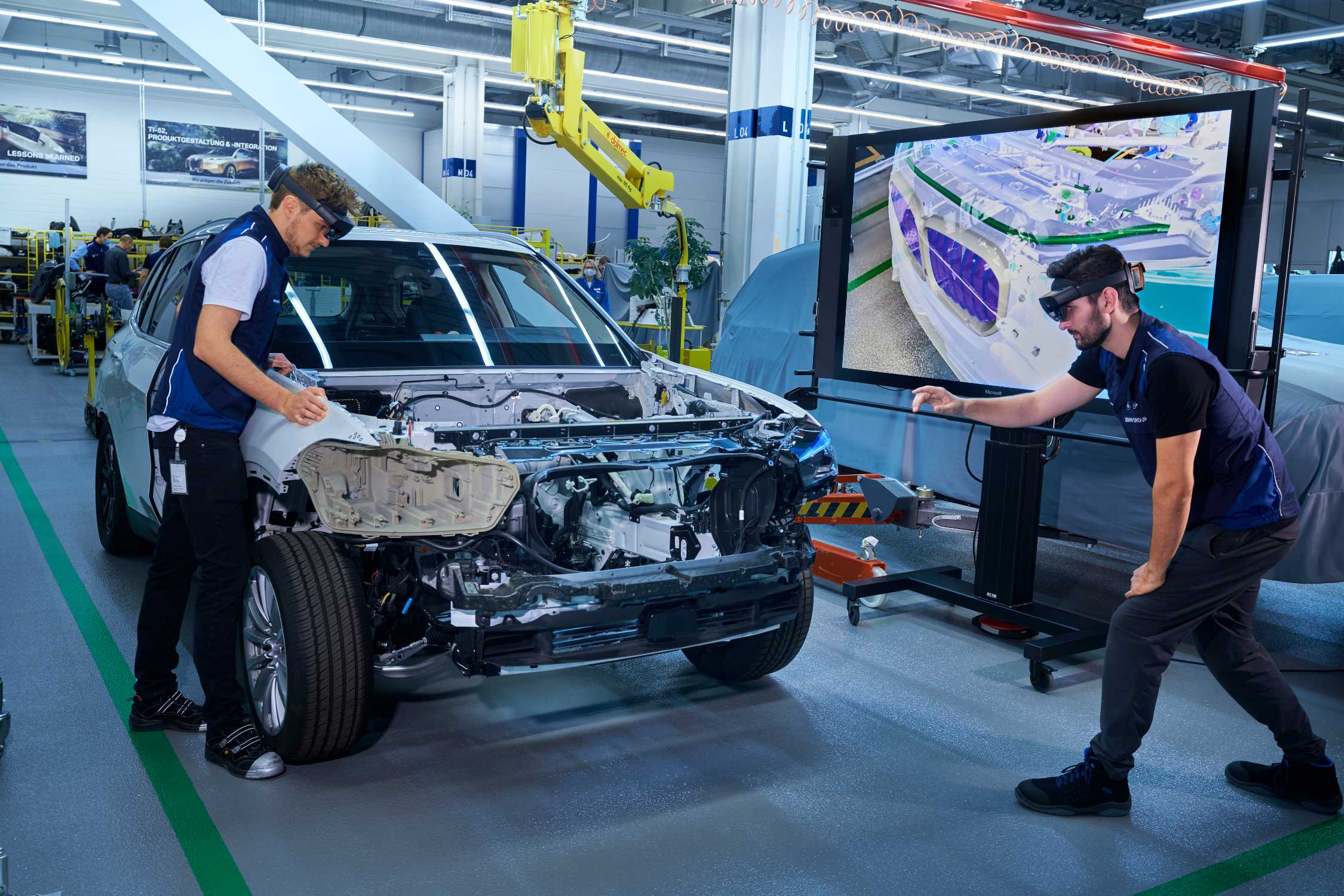PressClub Middle East · Article.
Munich Pilot Plant: BMW Group uses augmented reality in prototyping.
Fri Sep 18 11:00:00 CEST 2020 Press Release
AR saves up to a year on vehicle module validation +++ Assembly processes can be verified early and adjusted for series production
Press Contact.
Osama El-Sherif
BMW Group
Tel: +971-4-3129-964
send an e-mail
Author.
Osama El-Sherif
BMW Group
Munich. The BMW Group is using a new augmented reality (AR) application in vehicle concept and prototype engineering, speeding up the process by as much as twelve months, from individual vehicle sections through to complex production stages. AR goggles allow real geometries – on a vehicle body, for instance – to be overlaid with true-to-scale holographic 3D models, so a range of concept variants and assembly processes for future series vehicles can be assessed flexibly and cost-efficiently.
Michael Schneider, head of Complete Vehicle at the Pilot Plant: “The AR goggles and CAD data allow us to find out much more quickly whether the production worker will be able to fit the component properly later on, in series production. That way, we need far fewer test setups.”
Christoph Leibetseder, head of Digitalisation, Prototyping and Measurement Technologies at the Pilot Plant adds: “Another key advantage is that it saves us time and money when we integrate new vehicles into production.”
Vehicle concepts visualised in 3D
Vehicles and their components are visualised on a platform linked to the BMW Group’s product data management system. CAD files of components are drag-and-dropped from the web-based database to the AR goggles, which the specialists can then use to reproduce the data in 3D and their original size in a realistic environment. The AR application is controlled by hand, allowing direct interaction with virtual components.
With the AR application, a simple hand movement is enough to modify not only the size but also the position and angle of components. In addition, cross-sections can be created to provide a view of the vehicle’s inner structures. Another advantage is the collaborative working: people at different locations around the world can now employ multi-user mode to team up and review designs and concepts together, and identify any errors.

Collaboration with start-up and research organisation
As part of this project, the BMW Group is working with a Munich-based start-up and a research organisation. Work on developing and piloting the first augmented reality application commenced within a year at the BMW Group’s Vehicle Pilot Plant in Munich. Research and methodology development focuses on cloud-based visualisations and smart object recognition.
Pilot Plant as a Competence Centre of the BMW Group
The BMW Group’s Pilot Plant is located in the Research & Innovation Centre in Munich, with three further associated facilities to the north of the city, in Hallbergmoos, Oberschleissheim and Garching. With a total area of 100,000 m2, it is home to 850 associates, who work on up to six vehicle projects simultaneously. Like the series plants, the Pilot Plant can assemble both electrically and combustion-powered prototypes. As the interface between development and production, it allows not only the product but also the series assembly processes to be refined to maturity, ready for transfer to regular plants where they are used in series production. The Pilot Plant comprises a bodyshop as well as assembly, prototype and concept car construction units, and the Additive Manufacturing Centre, a centre of excellence for 3D printing.